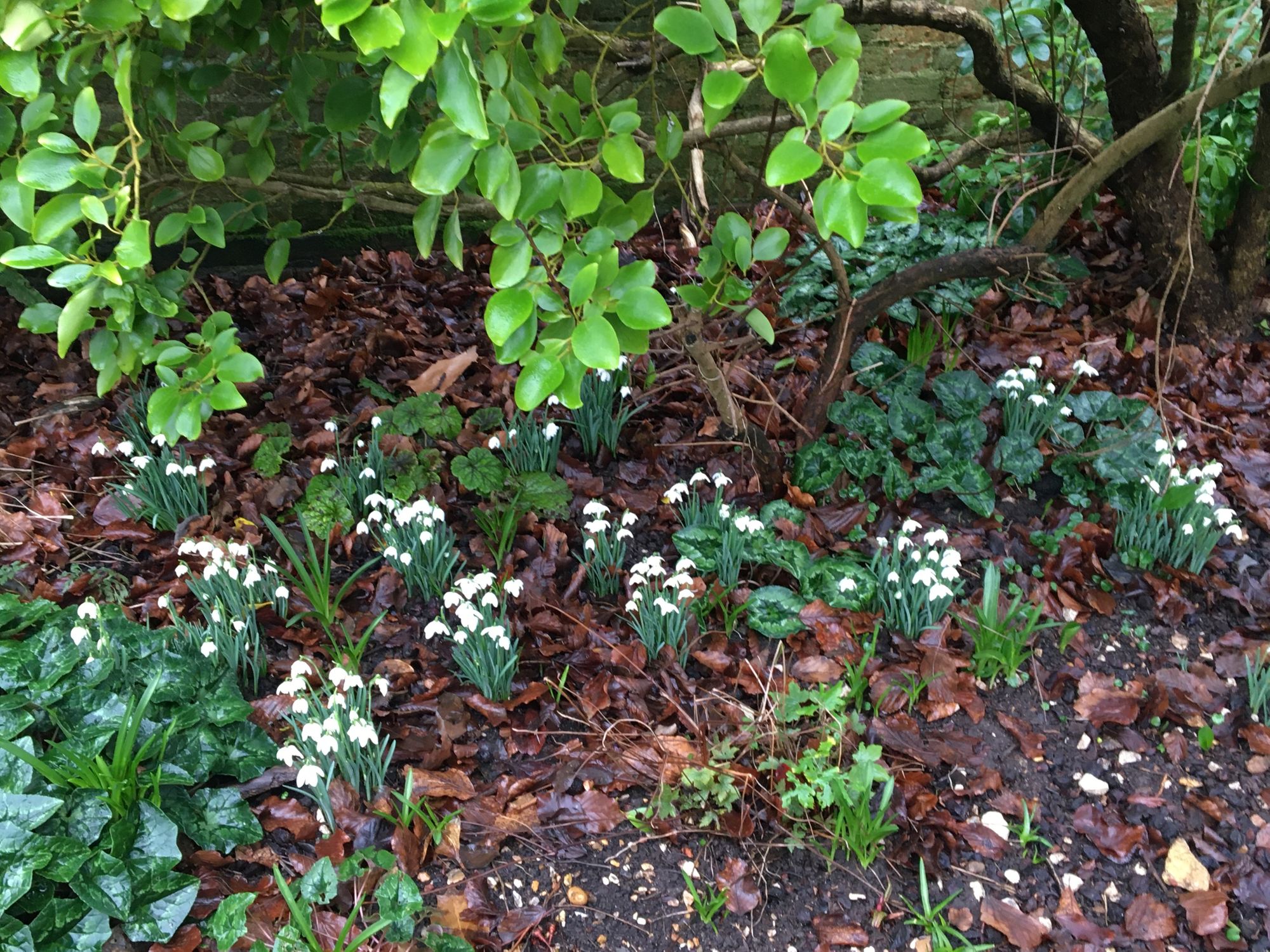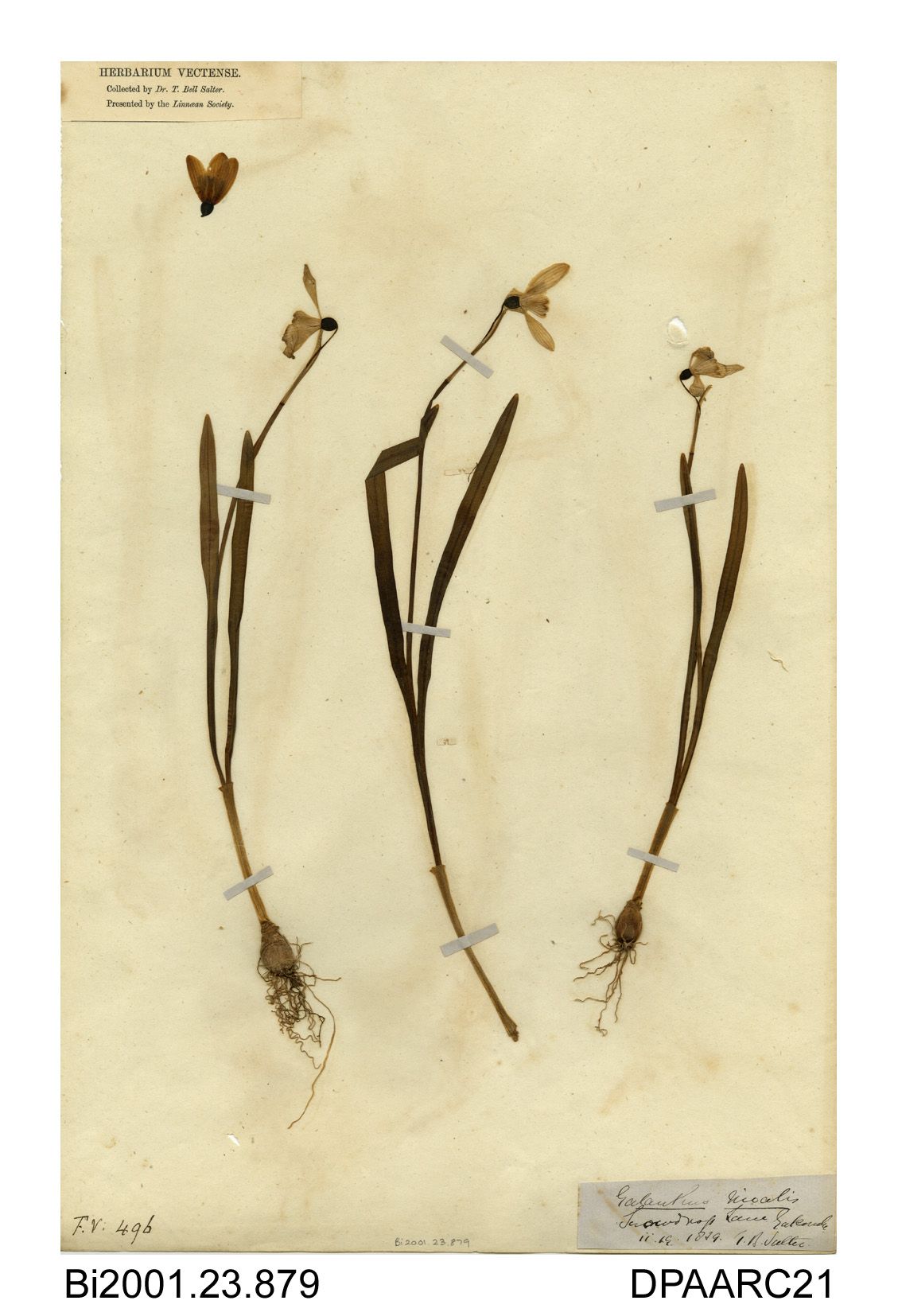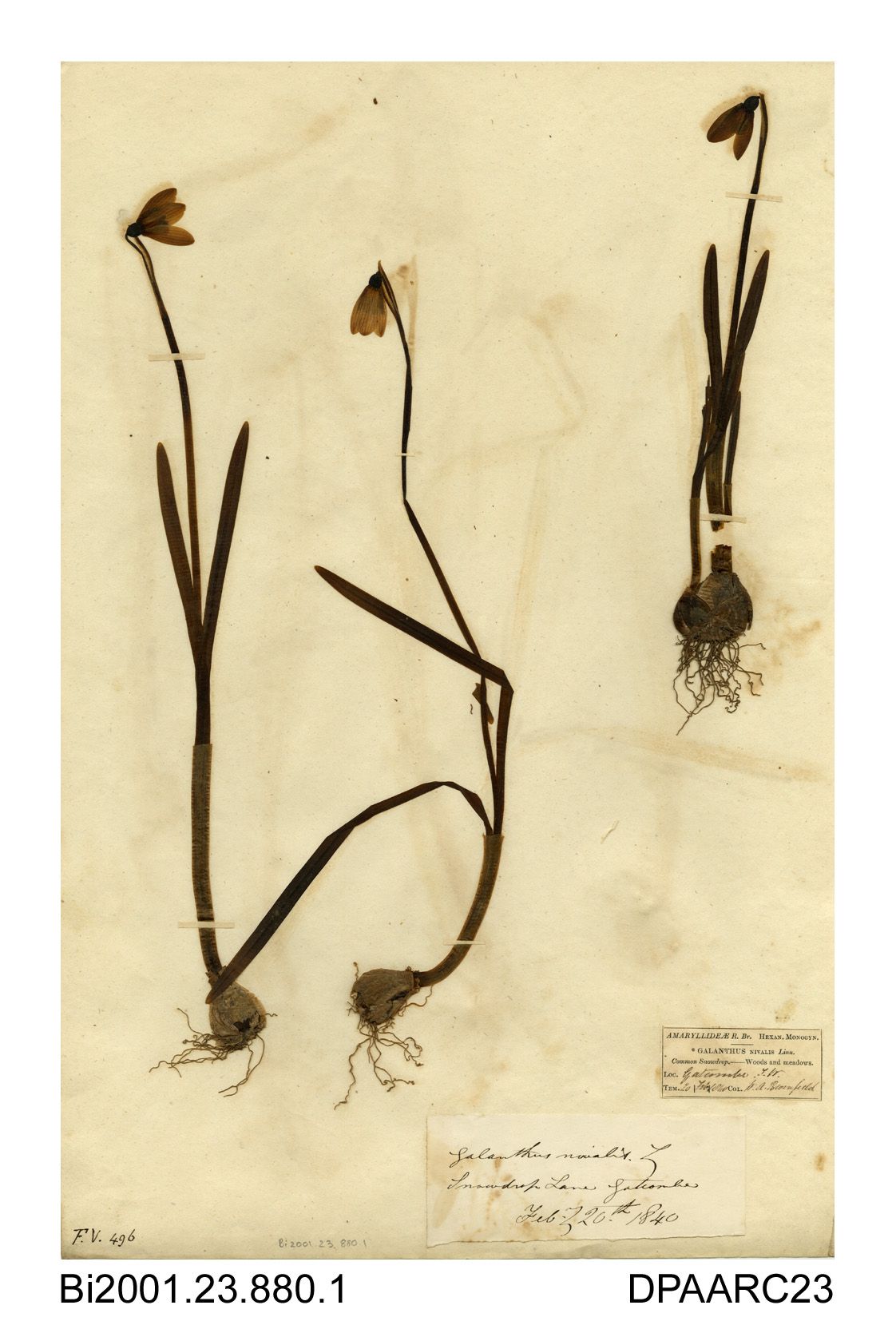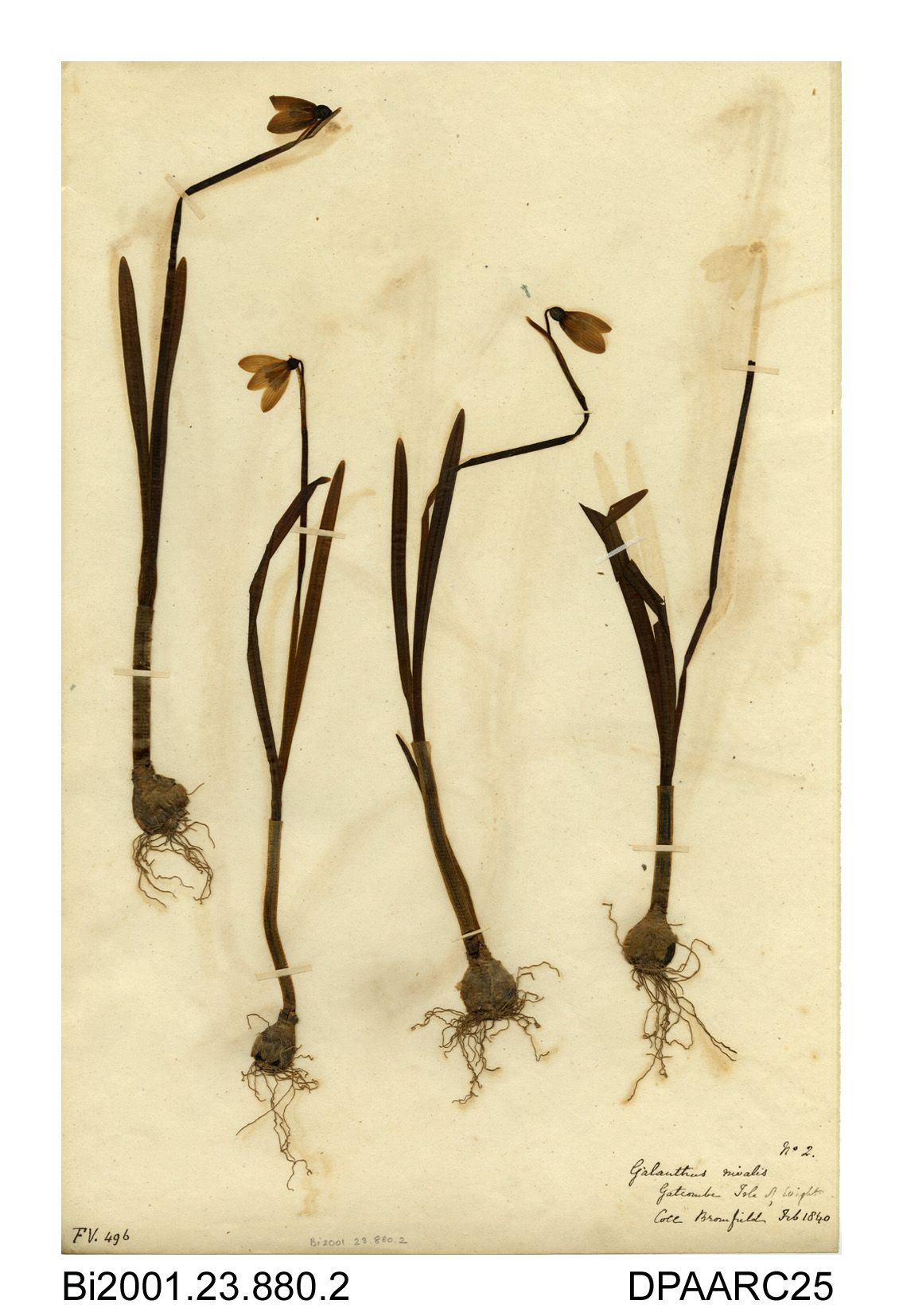It's snowdrop season and we've teamed up with Hampshire and Isle of Wight Wildlife Trust to talk about this exciting first sign that spring is on its way.
The flowering of snowdrops at this time of year is a welcome sign that the days are getting longer and spring is not too far away. Here, you can read about snowdrops in the collections cared for by Hampshire Cultural Trust and watch a video from the Hampshire and Isle of Wight Wildlife Trust to find out more about this fascinating plant.

The snowdrop was introduced to British gardens from Europe in the 16th century. In 1753, the Swedish botanist Carl Linnaeus gave the snowdrop its Greek/Latin name Galanthus nivalis, meaning ‘milk flower of the snow’.
You might be surprised to discover that the collections cared for by the trust contain nine groups of snowdrops, preserved in the Hampshire Herbarium, a collection of more than 23,000 specimens of plants from across Hampshire and beyond.
Three of our snowdrops were collected by W.A. Bromfield and T. Bell Salter at Gatcombe Park on the Isle of Wight in 1839 and 1840, at a time when snowdrops were rapidly gaining popularity in Britain as symbols of hope and purity. Bromfield noted they grew ‘in great profusion on the steep bushy sides of Snowdrop Lane, immediately West of Gatcombe Park, between that and Ganson's barn, and due North of Gatcombe village, also in several spots adjoining the park’.



Bromfield had a life-long interest in botany. He collected and preserved specimens from across Hampshire and the Isle of Wight as part of a systematic study to identify, understand and record the plants of the area, carefully recording the location of the plants, the date of each find and the scientific names of his discoveries. His findings were published in a catalogue of the wild plants of Hampshire and in Flora Vectensis, a catalogue of flowering plans and ferns indigenous to the Isle of Wight.
Botanists from the Botanical Society of Britain and Ireland continue to add plant specimens of interest to the Hampshire Herbarium each year. In the last 20 years, specimens of the giant snowdrop, Galanthus worononii, and the pleated snowdrop, Galanthus plicatus, both found in the wild, have been added to the collection.
Specimens in the Hampshire Herbarium are an immensely valuable source of information about plants and where they were found against which to measure the impact of processes such as habitat destruction and global warming in an era of climate change.
Visit the trust online collections to find out more about snowdrops in the collection and Bromfield the collector.
To learn more about snowdrops, watch this Signs of Spring Snowdrops video from Hampshire and Isle of Wight Wildlife Trust.
If you have enjoyed Culture on Call and you are able to make a donation, please click the link below. Any support you can give will help us keep communities connected to culture in these difficult times.





